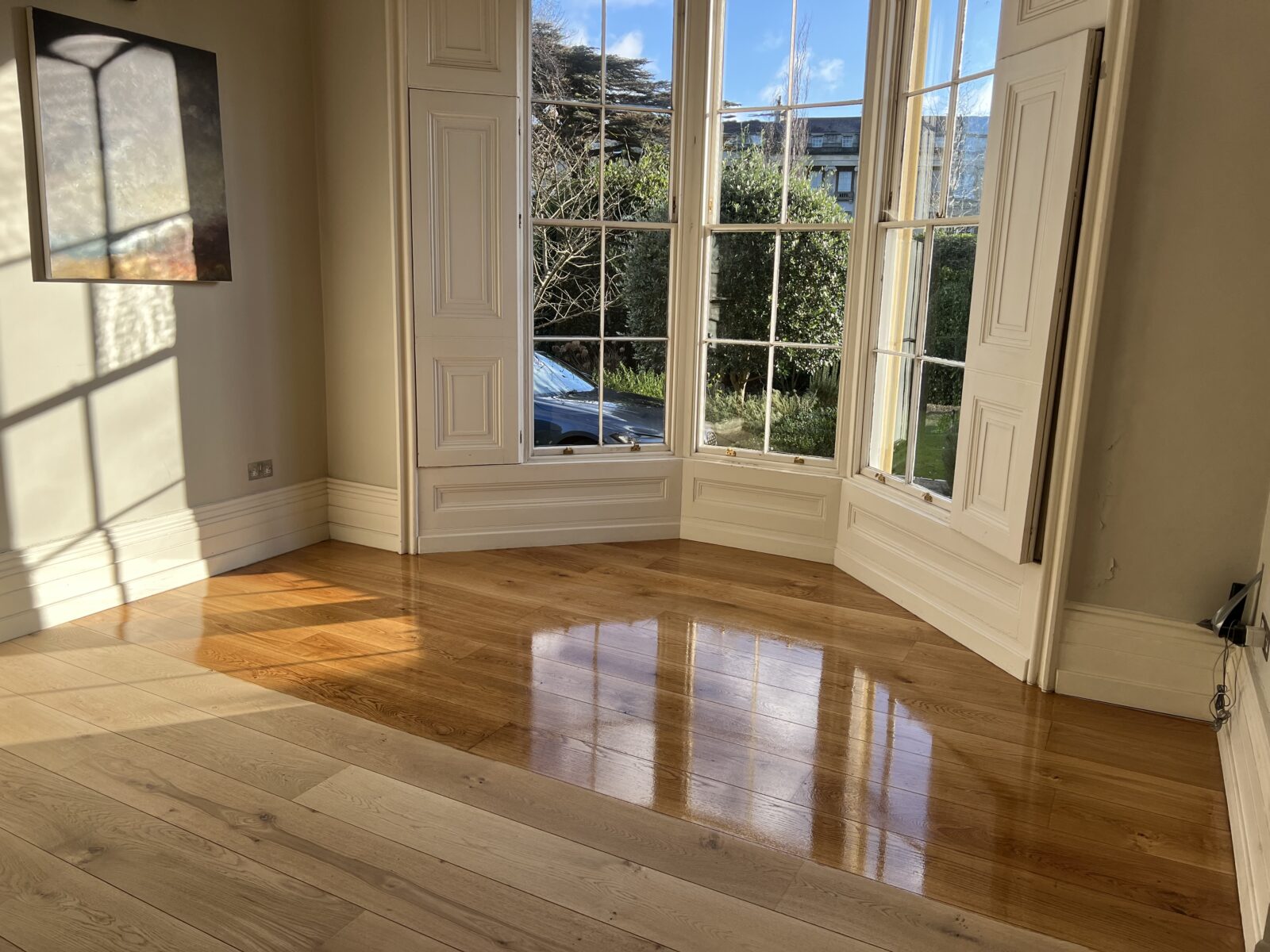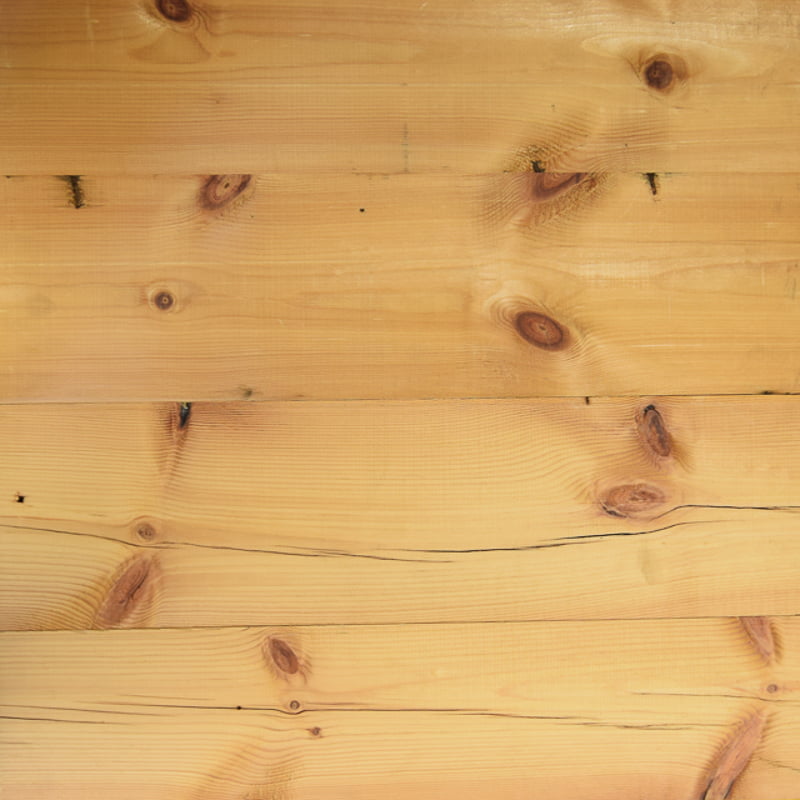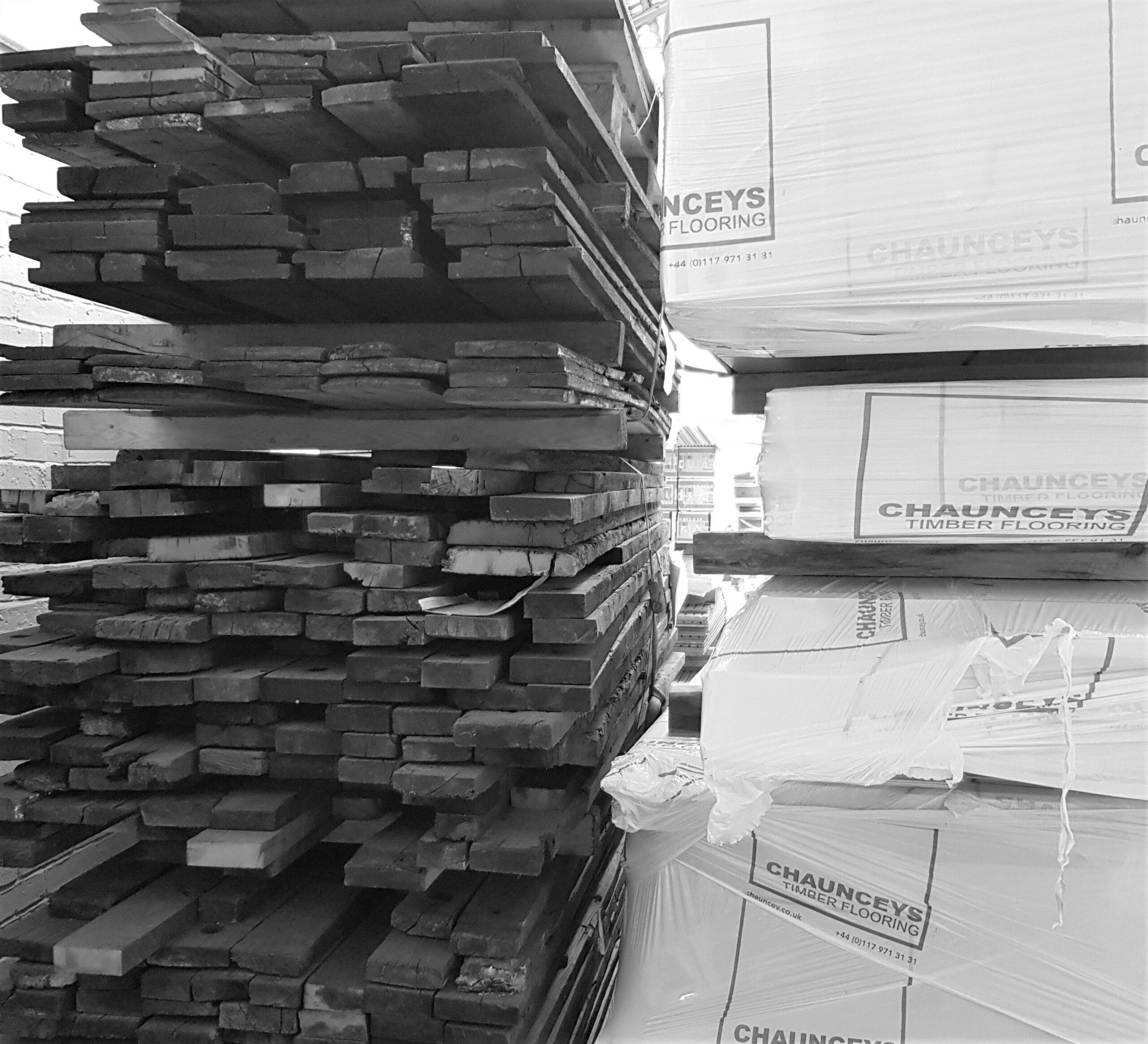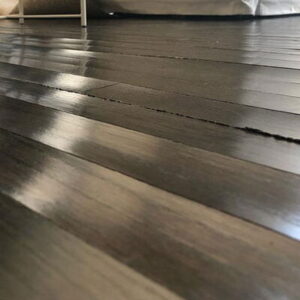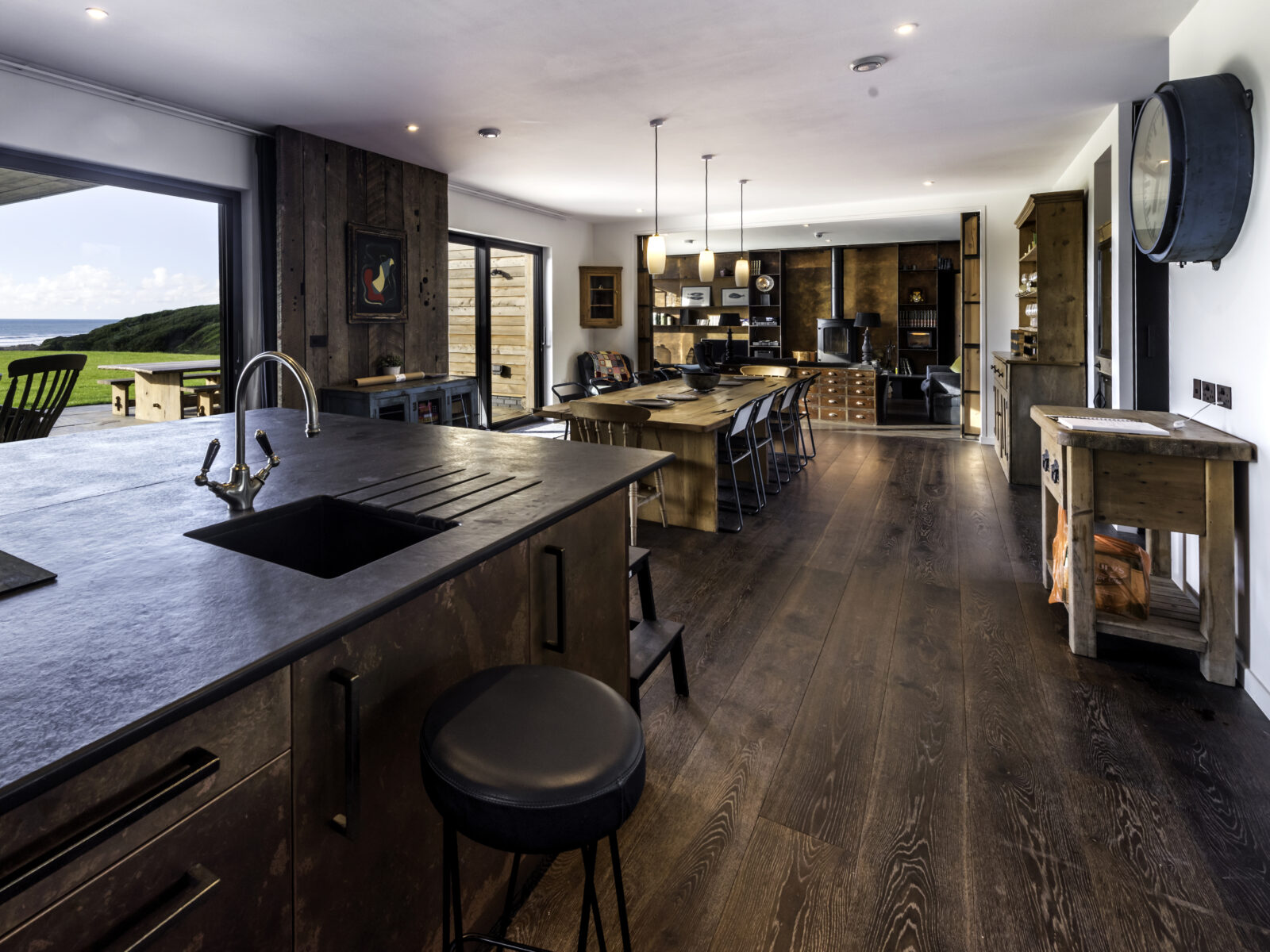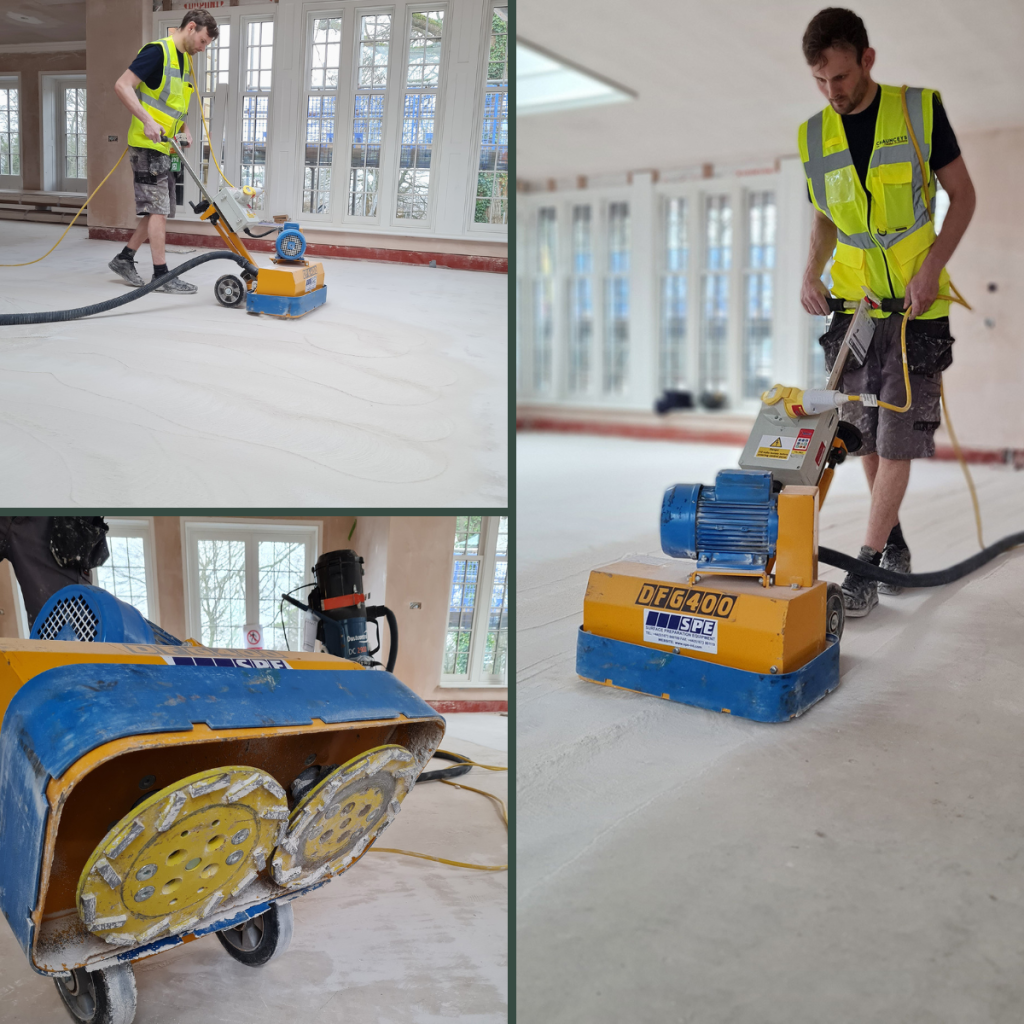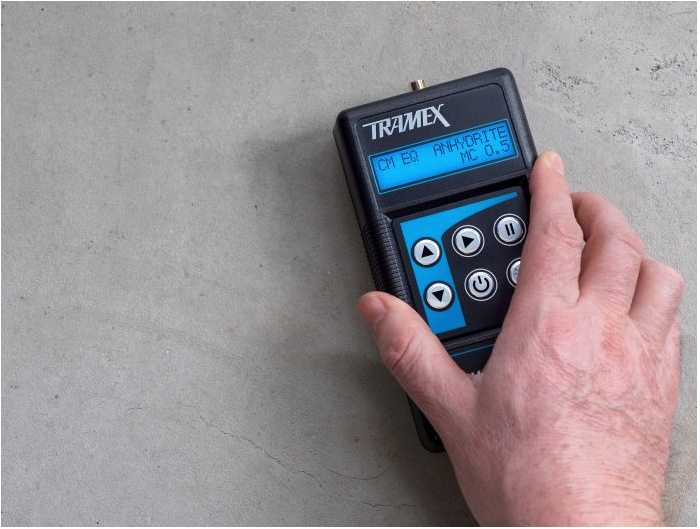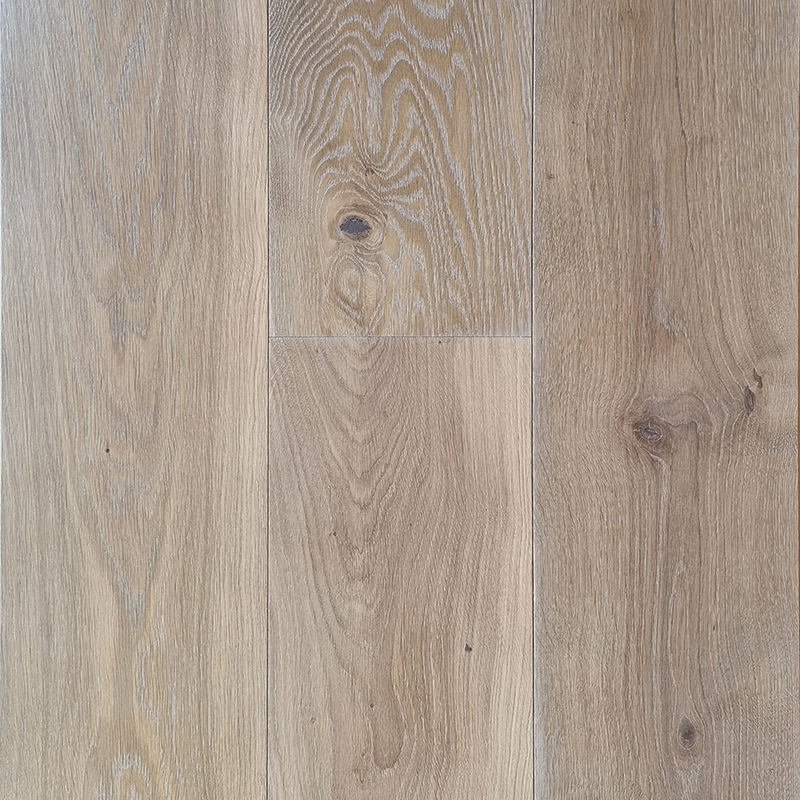Preparing Anhydrite Screed for Wood Flooring
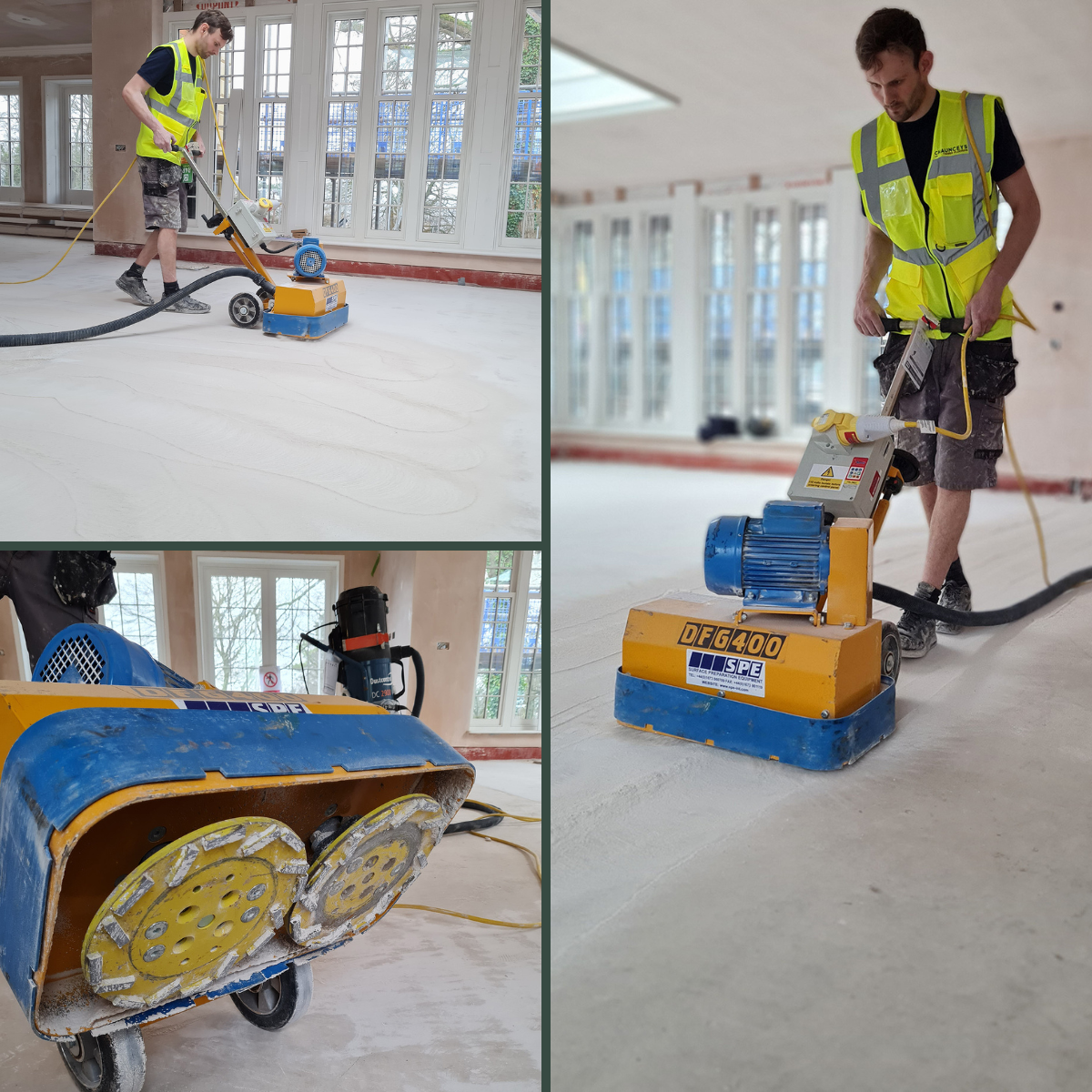
What is Anhydrite Screed?
Anhydrite screeds – also referred to as calcium sulphate or gypsum-based screeds – are a cost-effective, eco-friendly alternative to traditional sand and cement screeds.
These liquid screeds are pumped onto a site to quickly create a tough, level substrate. This saves a lot of time and labour compared to traditional screeds, especially for projects with large floor areas. They can be laid thinner, eliminate voids, are less prone to shrinkage, and they’re an excellent option for underfloor heating systems due to the heat transfer benefits.
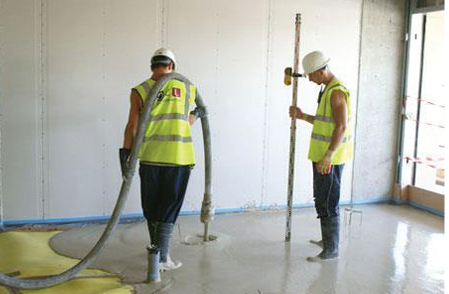
Anhydrite Screed Preparation: Getting Ready For Wood Flooring
Along with all the benefits that comes with an anhydrite screed, there’s a slight drawback to factor in: you’ll need to do some extra work to prepare the surface prior to bonding any flooring materials to it. Firstly, once the screed is set, you’ll need to remove the laitance.
What Is Laitance?
Laitance is a layer of fine particles which always forms on the surface of anhydrite screeds as they cure. Any bits of debris within the liquid screed come to the top as the moisture moves upwards. This forms a weak surface crust which is too crumbly to affix your wood flooring to.
Removing Laitance From Anhydrite Screeds
To ensure proper adhesion between your wood flooring and the screed subfloor, the surface laitance must be removed to expose the screed aggregate and create a sound, smooth, dry surface.
Removing laitance can be done by shot blasting, or by mechanical abrasion with a specialist floor grinder.
Pictured below: Bailey from our fitting team removed laitance from an anhydrite screed using a twin headed floor grinder. This was the first step in preparing the subfloor prior to installing our wood flooring.

Bailey from our fitting team using a twin head floor grinder to remove the laitance from an anhydrite screed
Laitance Hinders The Drying Process
Laitance stops anhydrite screed from drying out properly, so it’s a good idea to remove it as soon as you’ve given the screed the appropriate amount of time to harden.
Once the laitance has been removed, you can allow the screed time to fully dry naturally. It is possible to carefully accelerate it with the help of a dehumidifier and by using an underfloor heating (UFH) system.
As a guide, for natural drying time, allow one day for every millimetre depth up to the first 40mm, then two days per millimetre over this.
If your project deadline is looming and you can’t get the relative humidity (RH) levels down quickly enough, you can apply specialist moisture suppressants to allow for a faster installation.
Checking Your Screed’s Moisture Content
Make sure you test moisture content of the screed with a digital hygrometer or by the carbide method once the laitance has been removed. It needs to be less than 65% RH, or 0.5% carbide method (CM) moisture content – or equivalent digital hygrometer readings – prior to installation, unless you use a specialist residual moisture suppressant. This reading should be below 0.3%CM if using a UFH system.

You can’t lay wood flooring until your screed is dry all the way through, unless you use a product such as Uzin PE 404. This can be used as a moisture suppressant for anhydrite screeds up to 85% RH (up to 90-95% RH when used alongside other Uzin products).
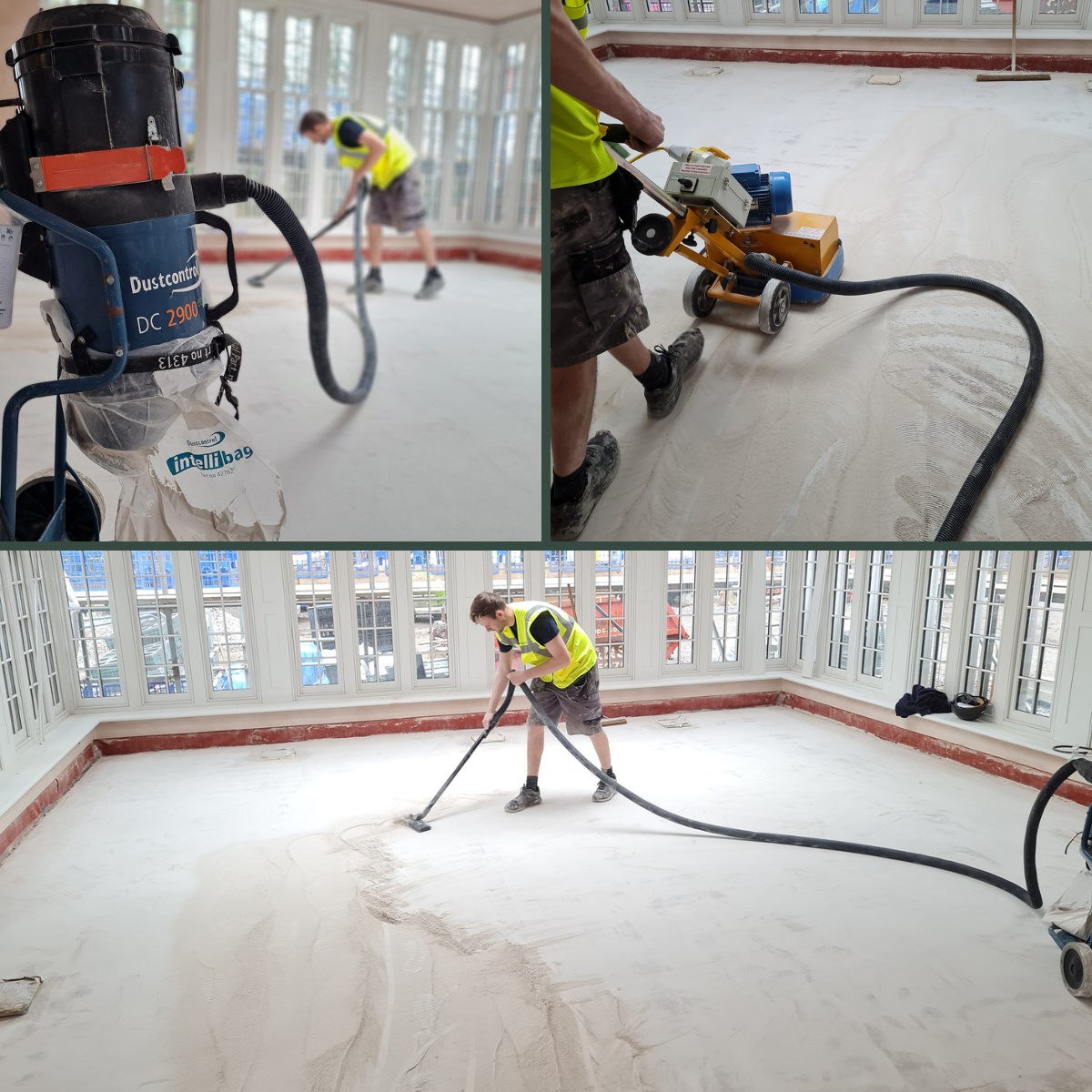
Bailey from our fitting team preparing an anhydrite screed subfloor
Before applying any primers, moisture suppressants, or flooring adhesives, ensure you thoroughly vacuum the floor to remove the dust from the laitance removal process.
Primers and Damp-Proof Membranes
There are some innovative new flooring products which have been specifically designed with anhydrite screeds in mind, which means you can avoid the long delays of waiting for your screed to fully dry before installing your wood flooring.
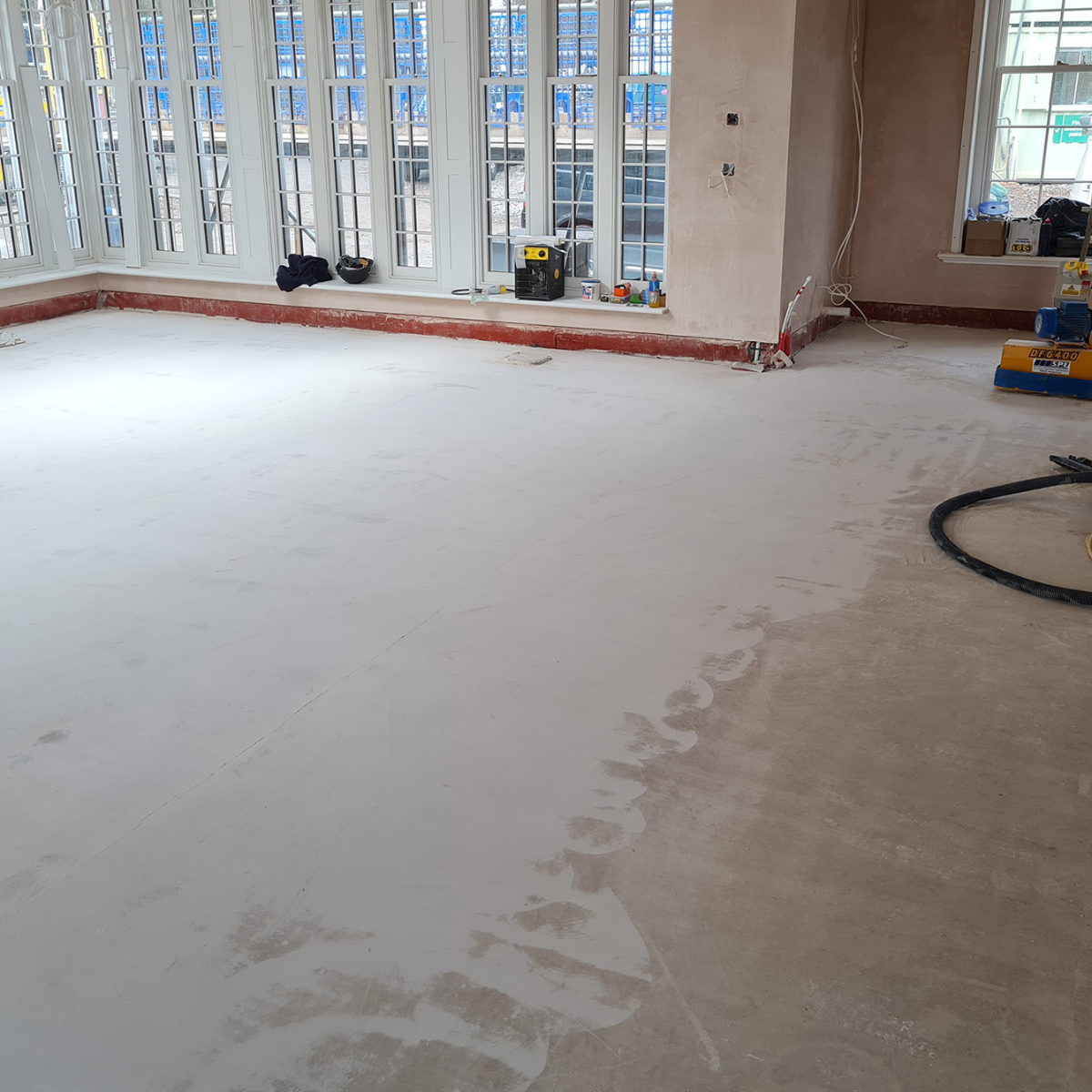
Section of anhydrite screed subfloor with laitance removed
Uzin offer moisture suppressants for calcium sulphate screeds, which allow you to complete projects much quicker. We used Uzin PE 404 to prepare a subfloor for this recent flooring project (see pictures below).
About Uzin PE 404
Uzin PE 404 is a rapid-drying 1-component resin primer and residual moisture suppressant which can be used on calcium sulphate screeds.
Using Uzin PE 404:
- Apply evenly across the floor using a nylon fibre roller (laitance must have been removed prior to application). Avoid forming puddles.
- The first coat acts as a rapid primer.
- Allow to dry (approx. 60 minutes). Optimum conditions: 18 – 25 °C, with floor temperature above 15 °C.
- If the subfloor moisture content exceeds 65 % but not 85 % then a second coat of UZIN PE 404 can be applied as a moisture suppressant.
- Add the second coat perpendicular to the first coat to ensure complete coverage.
- Wood flooring must be installed within 72 hours of application of the final coat.

Bailey from our fitting team applying Uzin 404 to anhydrite screed
By applying a second coat, Uzin PE 404 can be used as a stand-alone moisture vapour suppressant over a calcium sulphate screed that is below 85 % RH and drying.
It can also be used to protect calcium sulphate screeds up to 95% RH* (*up to 90% with UFH systems) and drying when used in conjunction with their 2-part epoxy DPM/Primer (Uzin PE 425).
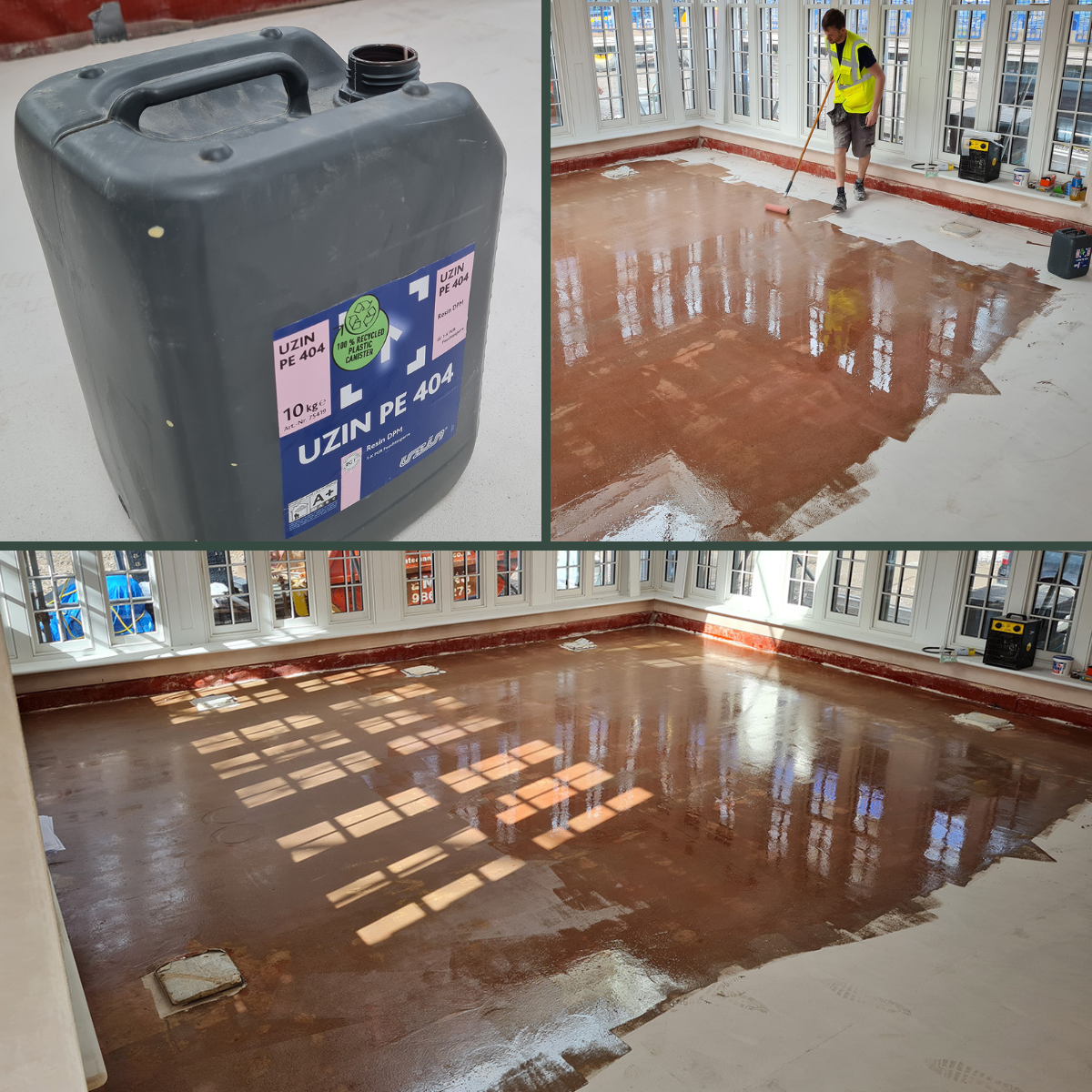
Bailey from our fitting team applying Uzin 404 to anhydrite screed
Alongside their rigourously-tested primers and unique damp proofing systems, Uzin produces a range of mutually compatible calcium sulphate based products for use with anhydrite screeds, including smoothing compounds, rapid repair mortars, and adhesives. They also have solutions to repair cracks and stress-induced joints.
If you have any questions about preparing your subfloor for wood flooring, contact our customer service team.


